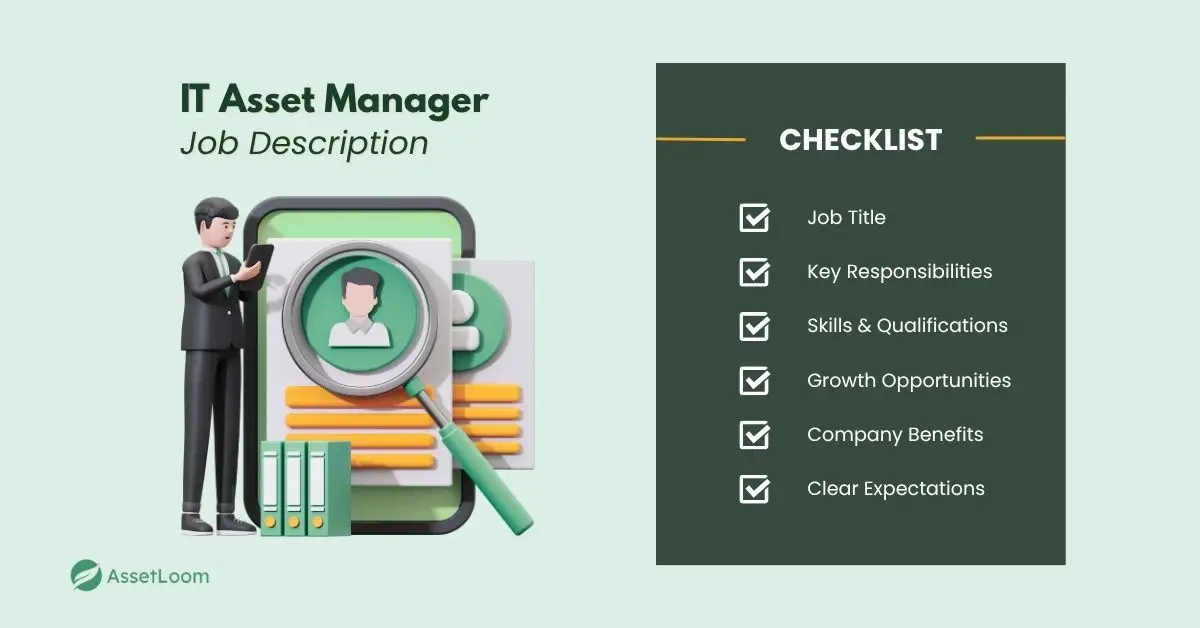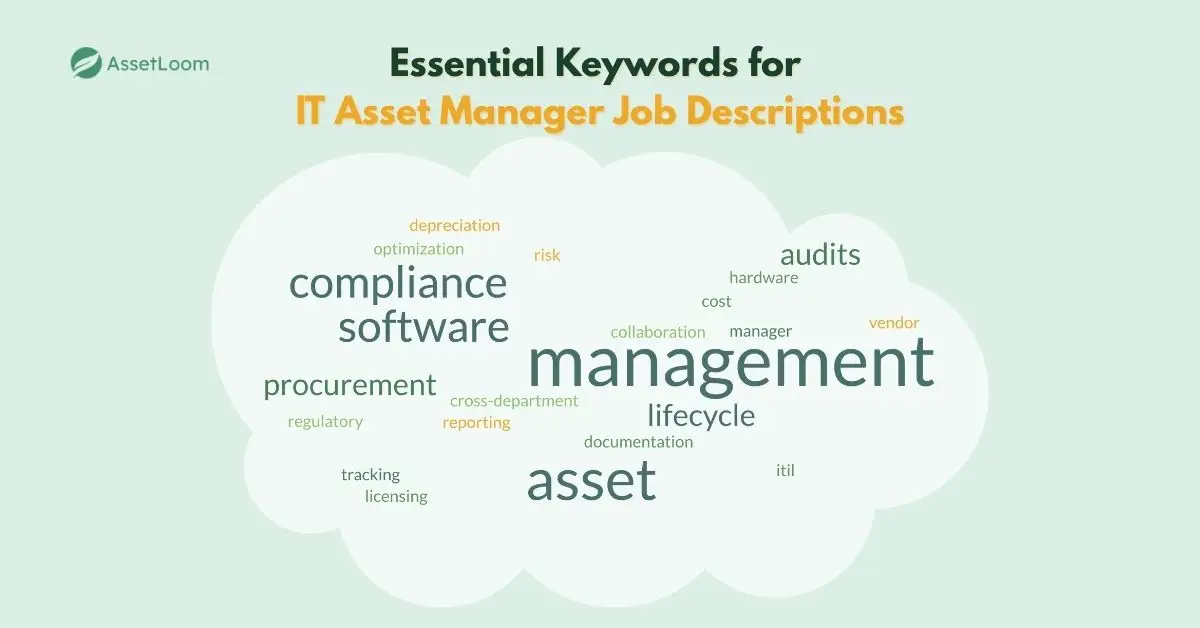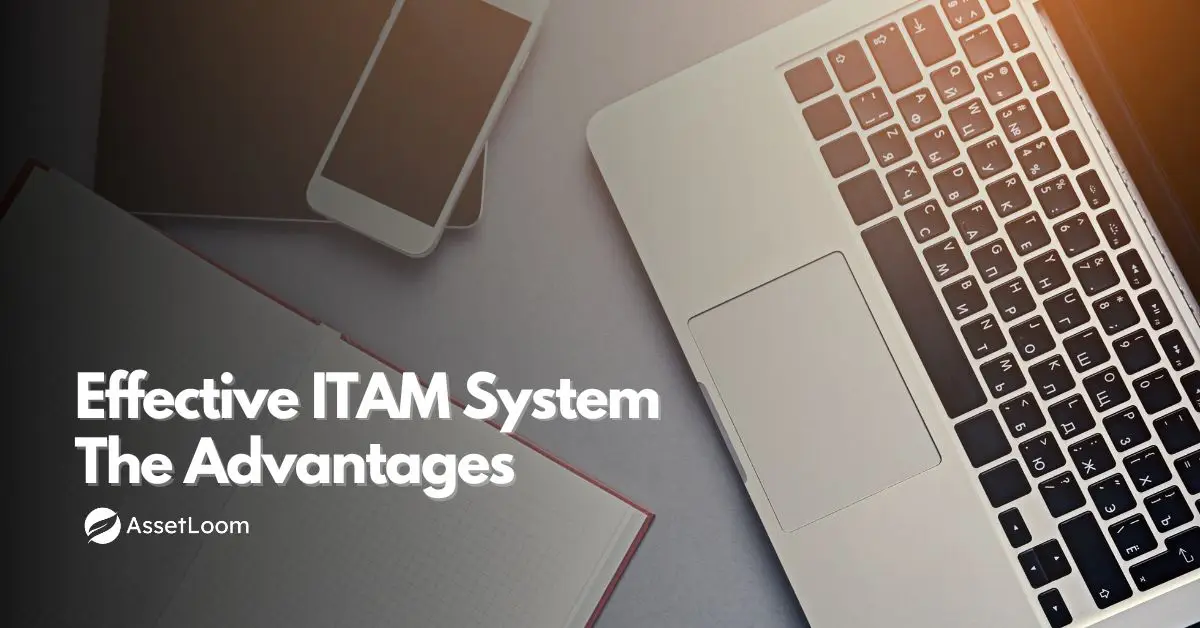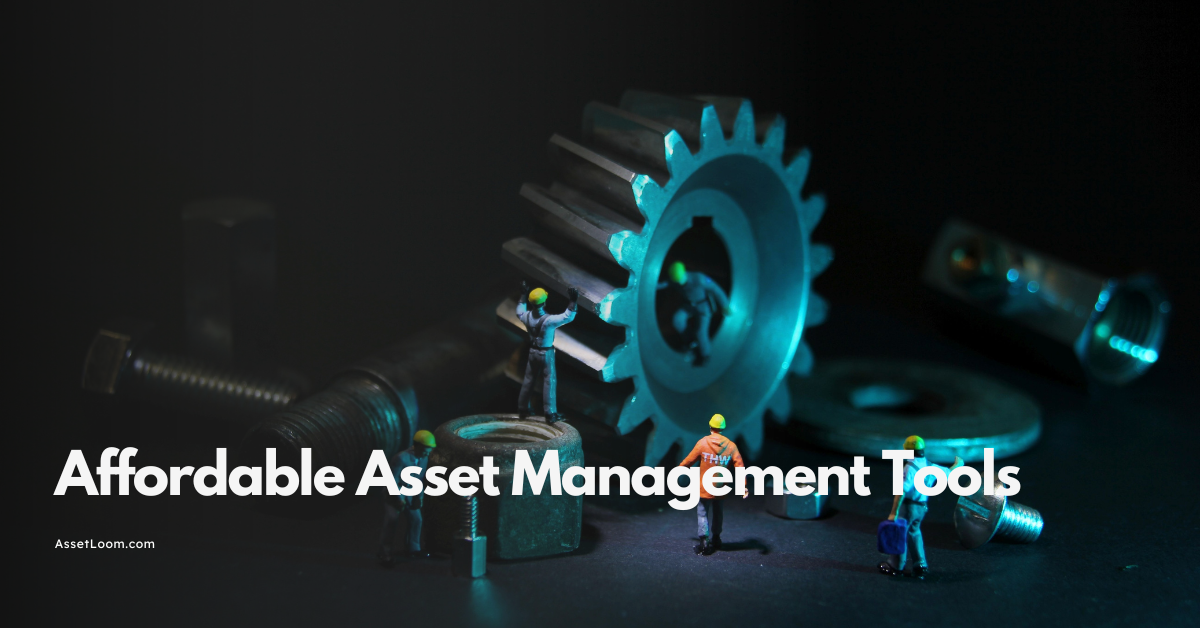How to Write an IT Asset Manager Job Description That Attracts Top Talent
Discover how to write a compelling IT Asset Manager job description that attracts top talent by highlighting key skills and responsibilities.
The right IT Asset Manager can make or break your organization’s tech infrastructure. As businesses grow and technology evolves, managing IT assets effectively becomes a game-changer, ensuring compliance, maximizing value, and driving efficiency. But how do you attract top-tier talent for this crucial role?
It starts with a job description that speaks to the best candidates. A well-crafted, compelling description goes beyond listing duties—it shows why your company is the ideal place for skilled professionals to thrive. With the right approach, you’ll not only fill the role, but you’ll also find someone who’s passionate about transforming your IT asset management strategy.
In this blog, we’ll break down how to create an IT Asset Manager job description that stands out, attracts top talent, and helps you build a stronger, more efficient IT team.
Start with an Attention-Grabbing Job Title
The job title is the first thing your candidates will see, so it’s worth getting it right. A clear, specific title does more than just label the role—it can spark interest and set expectations. Instead of the usual “IT Asset Manager,” why not get a bit more creative?
Here are a few ideas:
- “Senior IT Asset Manager” – Perfect for roles that need someone with extensive experience or leadership skills.
- “IT Asset Management Specialist” – This title works well if the job is more focused on specialized knowledge, like procurement or compliance.
- “IT Asset Manager, Infrastructure” – If the role has a specific focus (e.g., handling larger IT infrastructure), this title makes it clear from the get-go.
Why the Right Job Title Matters
A thoughtful title isn’t just about sounding smart—it helps the right people find your posting. Titles with keywords like “IT Asset Management,” “Lifecycle Management,” or “Compliance” will help your job post show up in the search results. The more specific the title, the easier it is for candidates to know what they’re applying for.
But it’s not just about visibility—it’s about setting the right tone. A precise job title signals to candidates that you’re serious about finding the right person for the role. It shows that the position has real responsibility and is important within the organization.
Outline Key Responsibilities
Once you’ve got a solid job title, it’s time to get into the meat of the role—the responsibilities. This section is all about setting expectations and giving candidates a clear idea of what they’ll be doing day-to-day. Let’s make sure it’s easy to digest and reflects the real impact of the position.
Managing the IT Asset Lifecycle
This is the core of the IT Asset Manager’s role. You’ll need someone who can handle the full lifecycle of IT assets—from procurement to disposal. That means ensuring everything is used efficiently and replaced when needed.
What they’ll be doing:
- Procurement: Finding and buying the right assets for the company while staying within budget.
- Deployment: Making sure assets are set up and running smoothly across the organization.
- Maintenance: Keeping everything up-to-date with patches, upgrades, and regular checks.
- Disposal: Properly decommissioning and recycling old assets so that no data is left behind.
With a good lifecycle management system, you’re getting the most out of every asset and cutting costs at the same time.
Asset Tracking and Documentation
Accurate tracking is essential for asset management to work. An IT Asset Manager is responsible for keeping tabs on every single asset—hardware, software, and licenses. And they’ll need to document everything, so there’s no confusion down the road.
What this looks like:
- Asset Registers: Creating and keeping up-to-date a comprehensive record of all company assets.
- Asset Tagging: Using things like barcodes or RFID tags to track the movement and status of assets.
- Reporting: Generating reports that show asset status, usage, and depreciation for future planning.
This responsibility ensures you’re not only staying organized but also compliant with various regulations. Missing assets or outdated records can lead to unnecessary expenses or compliance issues.
Compliance and Audits
Compliance is a huge part of asset management, especially in regulated industries. IT Asset Managers need to stay on top of all relevant regulations and licensing agreements. Regular audits will help catch issues before they become expensive problems.
What’s involved:
- Software Licensing: Making sure the company doesn’t have too many or too few software licenses (both can be costly).
- Regulatory Compliance: Keeping up with industry regulations like GDPR, HIPAA, or others that apply to your business.
- Internal Audits: Running audits to confirm that asset records are accurate and comply with internal policies.
This isn’t just about avoiding penalties—it’s about building a trustworthy, secure environment for your company and its clients.
Cross-Department Collaboration
IT Asset Managers don’t work alone. They’re often in close contact with IT, procurement, and finance teams. This collaboration ensures that assets are deployed, used, and tracked effectively across the organization.
What they’ll need to do:
- Coordinate with IT Teams: Make sure assets are configured properly and meet the company’s tech needs.
- Collaborate with Procurement: Work with procurement to get the best deals on assets that meet company standards.
- Partner with Finance: Help manage budgets, track asset depreciation, and plan for future purchases.
A solid team effort across departments makes asset management more streamlined, efficient, and cost-effective.
Highlight Must-Have Skills and Qualifications
Now that we’ve covered the responsibilities, let's focus on the skills and qualifications that make someone the right fit for the IT Asset Manager role.
Technical Skills
- Asset Management Software: Familiarity with tools like AssetLoom, Ivanti, or ServiceNow is crucial for tracking and managing assets effectively from day one.
- Compliance Knowledge: The candidate should understand key regulations like ITIL, SOX, or GDPR, ensuring assets meet compliance standards.
- Procurement Experience: A solid background in sourcing and purchasing IT assets, with a focus on balancing cost and quality.
Soft Skills
- Communication: IT Asset Managers work with multiple teams, so strong communication is essential for smooth coordination.
- Problem-Solving: Asset management often comes with unexpected challenges. Strong problem-solving skills are vital for handling issues like asset shortages or compliance audits.
- Attention to Detail: Precision matters in asset management. The best candidates will be meticulous, ensuring no asset or detail is overlooked.
Industry-Specific Qualifications
Depending on your industry, certifications like CHAMP or ITIL can be important. For tech-focused roles, ITIL certification is often essential, while regulated industries may prioritize compliance-related certifications.
Emphasize Growth Opportunities & Benefits
While it’s important to outline the role’s responsibilities, don’t forget to highlight what your organization offers in return. Top talent is looking for more than just a paycheck—they want career growth and meaningful development opportunities. This is where you can showcase what makes your company stand out.
Career Growth
Show candidates that the role offers real opportunities for advancement:
- Skill Development: They’ll get to work with cutting-edge tools, stay updated on the latest compliance standards, and gain valuable certifications, like Certified IT Asset Manager. A strong background in IT Asset Management (ITAM) will be key to excelling in the role and advancing within the organization.
- Leadership Opportunities: If the position involves managing teams or projects, mention this. Top talent loves roles with room for leadership.
- Cross-Department Growth: This role offers the chance to work with teams across finance, procurement, and IT, opening doors to other areas like project management or operations.
Company Benefits
Candidates want to know what’s in it for them. Highlight these perks to attract the best:
- Competitive Salary: Be upfront about compensation, and if you can’t offer the highest salary, emphasize other benefits.
- Work-Life Balance: If your company offers remote work, flexible hours, or generous PTO, make sure to mention it. This speaks volumes to candidates seeking balance.
- Additional Perks: Mention benefits like retirement plans, health insurance, performance bonuses, and professional development funds—these can make a significant impact on a candidate’s decision.
Be Transparent About Expectations
When it comes to hiring, transparency is key. Be upfront about what you expect from candidates in terms of working hours, availability, and travel requirements. If your IT Asset Manager will be working across multiple time zones or needs to travel to different sites, let them know early.
Work Environment
- Remote, Hybrid, or In-Office?: These days, flexibility is a big draw for candidates. Be clear about whether the role is fully remote, hybrid, or requires in-office presence.
- Travel Requirements: If the role involves travel (e.g., visiting data centers or offices), mention this in the description so candidates know what to expect.
Work Hours
- Flexible Hours: If the role allows for flexibility, especially in terms of scheduling, mention it. Candidates appreciate understanding whether the work hours are flexible or set.
- Overtime or On-Call: If the position involves overtime or being on-call for urgent asset management tasks, be upfront about it. Transparency about these expectations will help set the right tone for potential candidates.
This section, in combination with the earlier ones, helps set clear expectations for candidates. It not only attracts the right talent but also helps them visualize themselves in the role, whether it’s in terms of work-life balance, growth opportunities, or the day-to-day demands of the job.

Craft a Clear and Engaging Call-to-Action
Now that you’ve captured the attention of your potential candidates with a solid job title, clear responsibilities, and a list of skills, it’s time to seal the deal with a strong call-to-action (CTA). A great CTA isn’t just about telling candidates to apply—it’s about creating excitement and motivating them to take that next step.
Keep It Simple but Compelling
Your CTA should be clear and easy to follow, without too many barriers to entry. Candidates should feel like it’s easy to take the next step in the application process. Here’s how to make it count:
- Use Action-Oriented Language: Phrases like "Apply now," "Join our team," or "Take the next step in your career" create urgency and excitement.
- Keep It Direct: Make sure it’s clear what candidates should do. For example, "Click here to apply" or "Submit your resume and cover letter today."
- Appeal to Candidates’ Aspirations: Let candidates know that applying is the first step to an exciting new chapter in their careers. For example, "Ready to make a real impact in IT asset management? Apply today!"
Example CTA
"Think you’re the perfect fit for this role? We’d love to hear from you. Click below to apply and start your journey with us today!"
The goal here is to make it easy for candidates to take that next step while also reinforcing that they could be part of something important and impactful.
Bonus Tip: Use Keywords for Better Searchability
This is a quick bonus tip that can really make a difference in how your job posting performs on job boards or in search engines. Using relevant keywords not only helps improve the chances of your job post being found, but it also ensures that your role is aligned with what candidates are actively searching for.
Example: "IT Asset Manager," "IT Asset Lifecycle," "IT Procurement," "Software Compliance," "Asset Management Software"—these are all great keywords to include.
By integrating these terms into your job description, you’ll improve its visibility, making it easier for the right candidates to find your posting.

Conclusion
Crafting the perfect IT Asset Manager job description is key to attracting the right talent. By clearly outlining the role, responsibilities, and skills, you’ll help candidates understand what’s expected of them and whether they’re a good fit for the job.
The right job title and detailed responsibilities set the foundation, but don’t forget to highlight growth opportunities and company benefits to show candidates what’s in it for them. A strong call-to-action is the final piece that motivates them to apply.
With a clear, engaging description, you’re one step closer to finding the perfect IT Asset Manager who will help your organization run smoothly and efficiently.

Related Blogs
Subscribe for Expert Tips and Updates
Receive the latest news from AssetLoom, right in your inbox.

